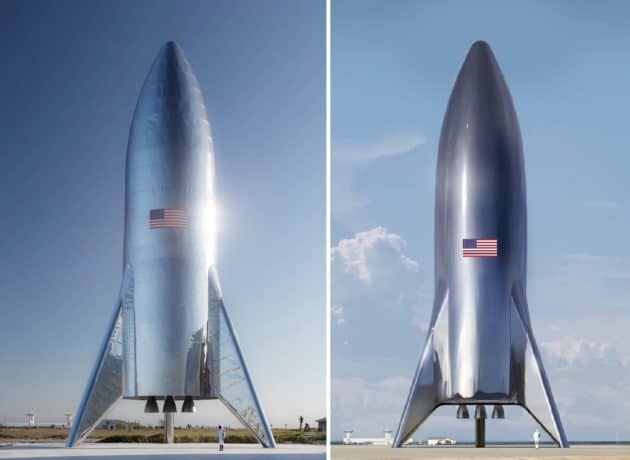
Elon Musk has opened up about a big design change to SpaceX’s interplanetary spaceship.
The billionaire entrepreneur announced earlier this month that Starship — the vehicle SpaceX is developing to take people to and from Mars and other distant destinations — will be made of stainless steel rather than carbon fiber, as originally planned.
In a recent interview with Popular Mechanics, Musk explained what motivated the switch. Expense was one factor. Carbon fiber costs $135 per kilogram, and 35 percent of the stuff must be scrapped — “you cut the fabric, and some of it you can’t use,” the SpaceX founder and CEO said. So the true cost of the material is nearly $200 per kg, compared to just $3 for stainless steel, he added.
Stainless steel’s high melting point is also a big advantage, Musk told Popular Mechanics Editor-in-Chief Ryan D’Agostino.
“So, typically aluminum or carbon fiber, for a steady-state operating temperature, you’re really limited to about 300 degrees Fahrenheit [150 degrees Celsius]. It’s not that high,” Musk said. “You can take little, brief excursions above that, maybe 350 [degrees F, or 180 degrees C]. Four-hundred [degrees F, or 200 degrees C], you’re really pushing it. It weakens. And there are some carbon fibers that can take 400 degrees Fahrenheit, but then you have strength knockdowns. But steel, you can do 1,500, [or] 1,600 degrees Fahrenheit [820 to 870 degrees C].”
Musk also detailed SpaceX’s plans for Starship’s innovative heat-shield system, which will employ transpiration cooling.
“You just need, essentially, two [stainless-steel] layers that are joined with stringers. You flow either fuel or water in between the sandwich layer, and then you have micro-perforations on the outside — very tiny perforations — and you essentially bleed water, or you could bleed fuel, through the micro-perforations on the outside,” Musk told D’Agostino. “To the best of my knowledge, this has never been proposed before.”
The entire interview is definitely worth a read; check it out here.
The 100-passenger Starship will launch atop a giant rocket called the Super Heavy. Until recently, SpaceX called the reusable transportation system the BFR, which stood for “Big Falcon Rocket.”
The company has already built a reduced-scale Starship prototype, which will test the design on brief “hopping” excursions that will stay firmly within Earth’s atmosphere.
Musk said on Jan. 5 that the company was aiming to fly this hopper for the first time within four to eight weeks. However, Mother Nature has complicated that timeline. Strong winds at SpaceX’s South Texas site knocked the hopper’s fairing over, and it’ll likely take a few weeks to fix the damage, Musk said via Twitter on Wednesday (Jan. 23).
If development and testing go well, Starship and the Super Heavy could launch on their first Mars mission in the mid-2020s, Musk has said.
